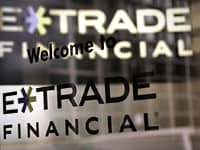This post was originally published on this site

Retail investors are trading more. The move to $0 commissions is likely a major factor.
But there are more things occurring to encourage retail trading, including stay-at-home orders and market volatility. Add it all up and you get electronic brokers reporting trading volumes that are up 100% year over year.
In the first quarter alone, daily average revenue trades, a standard industry metric, have doubled for most of the e-brokers from a year earlier.
- Ameritrade up 144%
- E-Trade up 129%
- Schwab up 98%
- Interactive Brokers up 72%
Source: Piper Sandler
That trend shows no signs of letting up: “Trades have continued to meaningfully accelerate with the pandemic volatility even thru April,” said Piper Sandler analyst Rich Repetto, who tracks e-broker trends.
Repetto notes that the move to $0 commissions, which happened late last year for most eBrokers, was a factor: “You can trade 20 shares one time, 50 shares the next time, to maybe get a better price on a different trade, and you don’t care because it’s free,” Repetto told me.
Michael Wong, an analyst at Morningstar who tracks the eBrokers, noted the effect that $0 commissions had on Ameritrade: “After the move to $0-commissions on many types of trades in October 2019, trading volume has been on an uptrend.”
Is retail moving markets in a way it hasn’t in the past?
Surprisingly, JJ Kinahan, Chief Market Strategist at AmeriTrade, told me that amidst all the market chaos in March and April, Ameritrade clients were net buyers of stocks, not sellers.
Kinahan saw investor interest spike in two distinct groups.
First, they went into dividend-paying stocks. “Our population is aging, and there is nowhere else to go to get return,” he told me, noting investors were buying companies like Citigroup, Bank of America, Exxon, and Chevron.
Second, there was a distinct speculative buying spree, led by millennials. “Millennials were the first to start buying cruise lines like Carnival, as well as airlines,” he told me. “People see them as long-term opportunities.”
For Kinahan, the main sign that user engagement — not just trading, but interest in the market — is way up is the interest in education.
“Our education usage is up three times year-over-year,” he told me. “Reading articles on our website, looking at the videos. Anything having to do with education has gone way up.”
Why the sudden interest in reading articles on the stock market?
“People have more time to spend looking at their investments, people can take an hour off in the middle of the day to really educate themselves. Our clients are looking at our information and saying, ‘I’m starting to understand this more,’ and this leads them to feel more confident trading,” he said.
Does all this mean that retail is having more influence on the markets?
“It does have an effect because it puts more demand on certain stocks,” Kinahan told me, but he cautioned that retail investors are only part of a large daily pool of traders that include pension funds, hedge funds, and international investors. “They aren’t the only buyers,” he said.
For the eBrokers, a sudden surge in trading with $0 commissions sounds like a losing proposition, but there are offsetting positives.
Patrick O’Shaughnessy of Raymond James, who tracks retail trading at Schwab,TD Ameritrade and E-Trade, noted that net new accounts among eBrokers more than tripled compared to the same period last year, and net new assets were up 80% year over year.
More investors, more assets under management means the eBrokers can make money by selling other services to investors, even with $0 commissions.
Another help for the eBrokers: Most sell client orders to trading firms to execute the trade, who then compensate the eBrokers, a process known as “payment for order flow.”
Does this mean that the retail investor is back, or is this a short-term buying spree that will end in disaster? Repetto believes that with no cost to trade, trading volumes will decline slightly, but not dramatically:
“Many of us are not going back to work any time soon. If you combine that with a gentle market recovery, we could continue to have retail trading strong for some time,” he said.
Subscribe to CNBC PRO for exclusive insights and analysis, and live business day programming from around the world.





